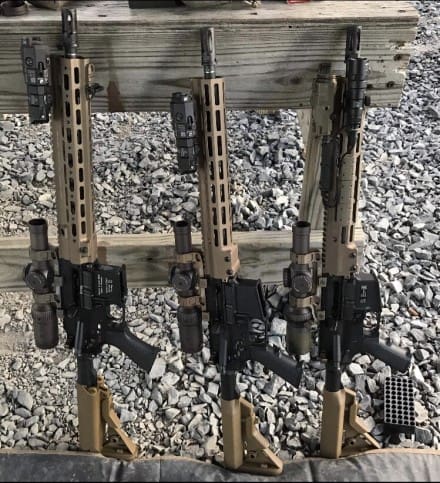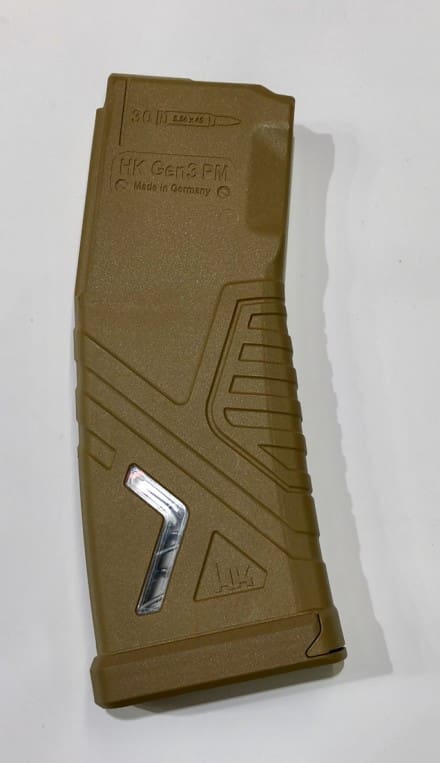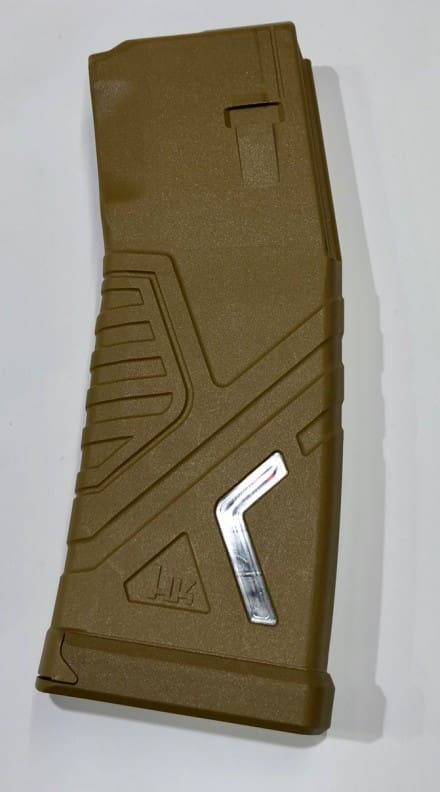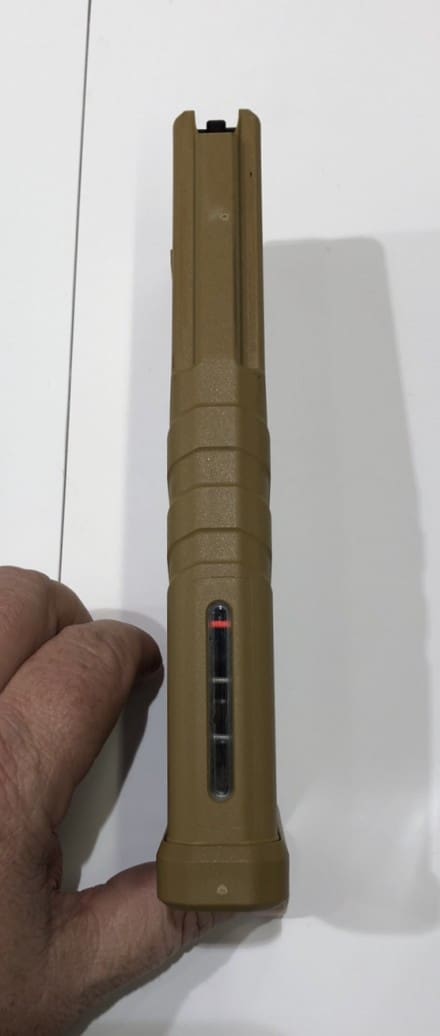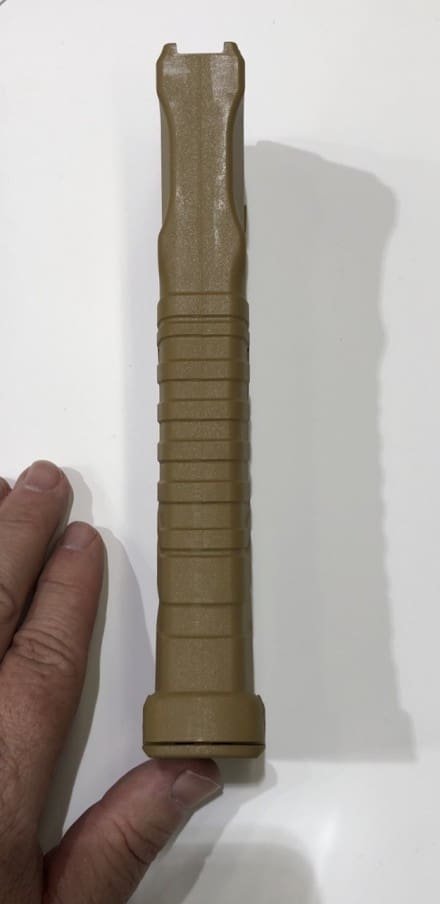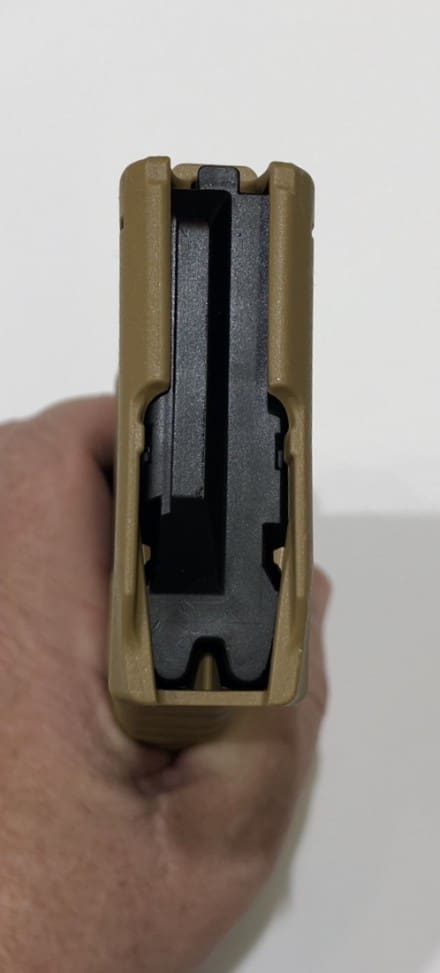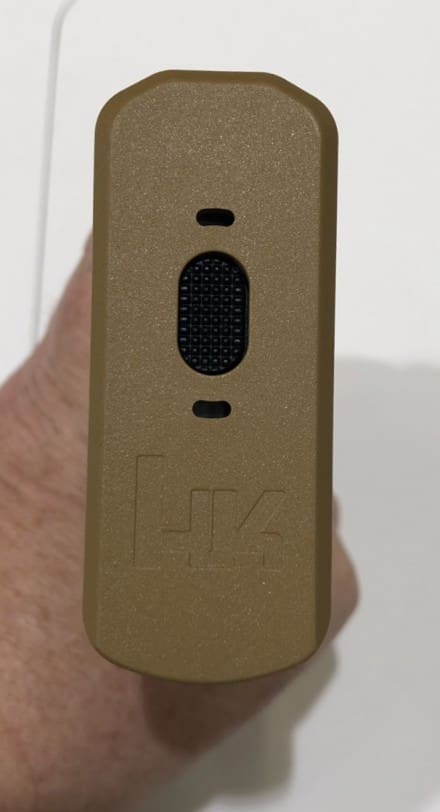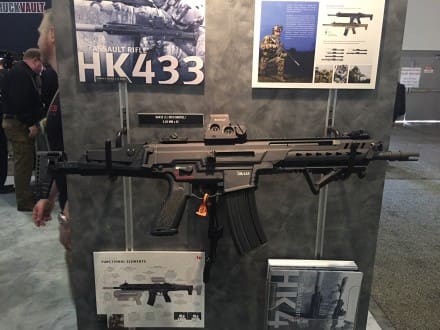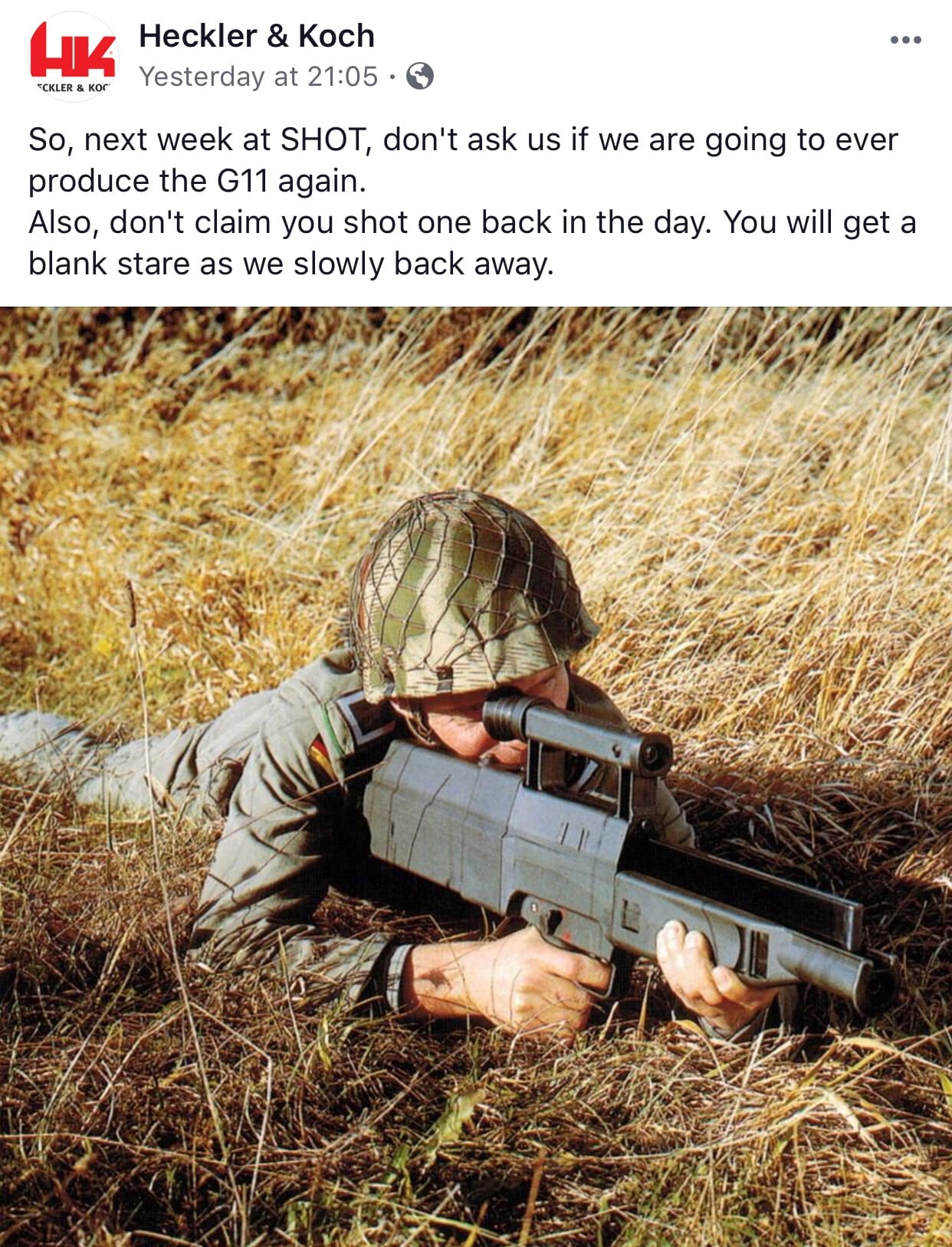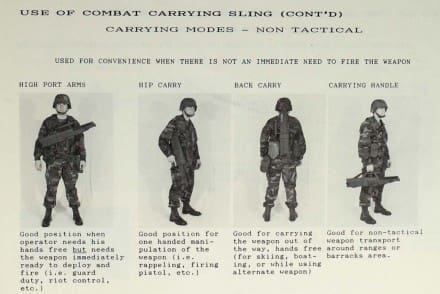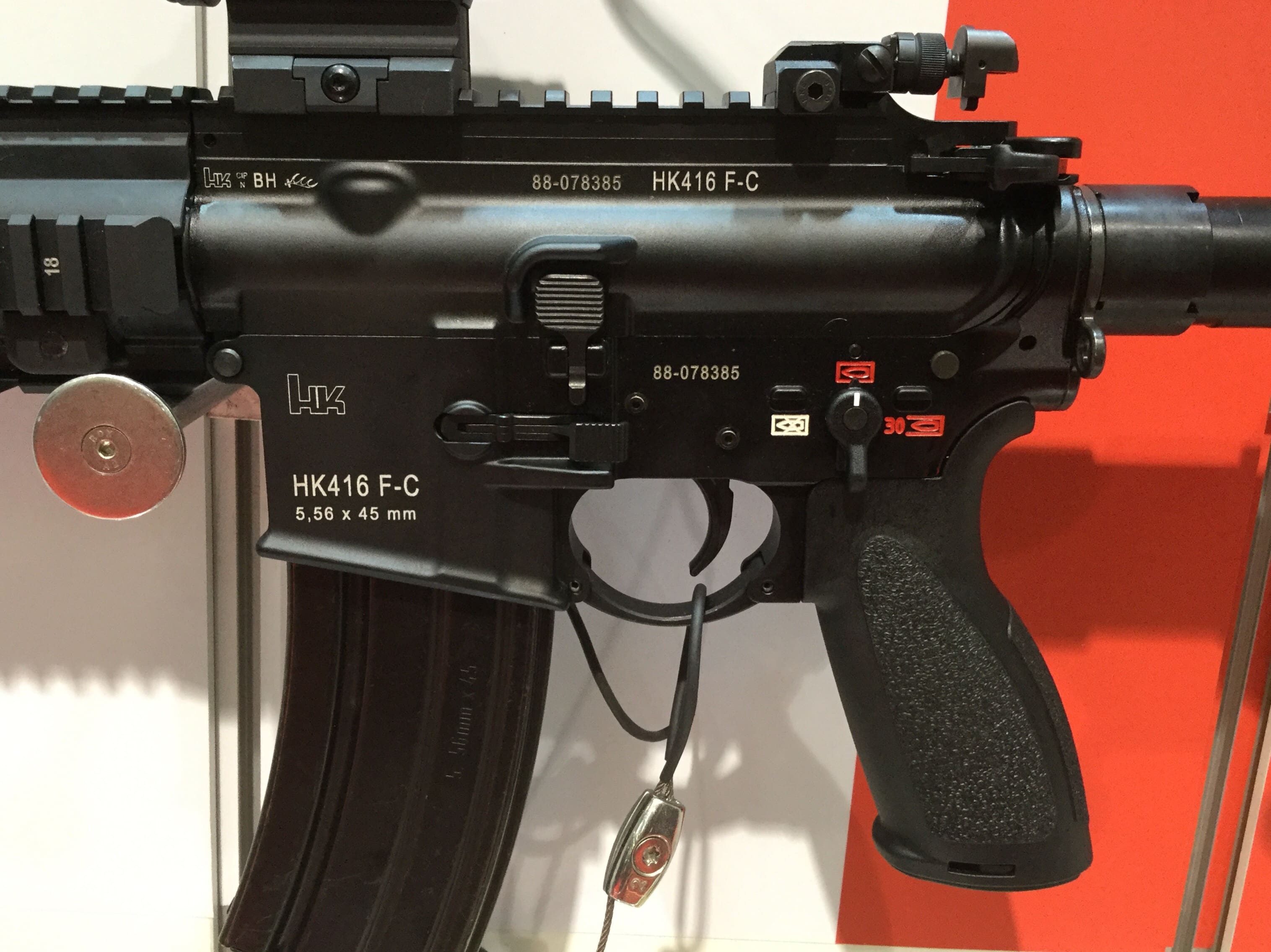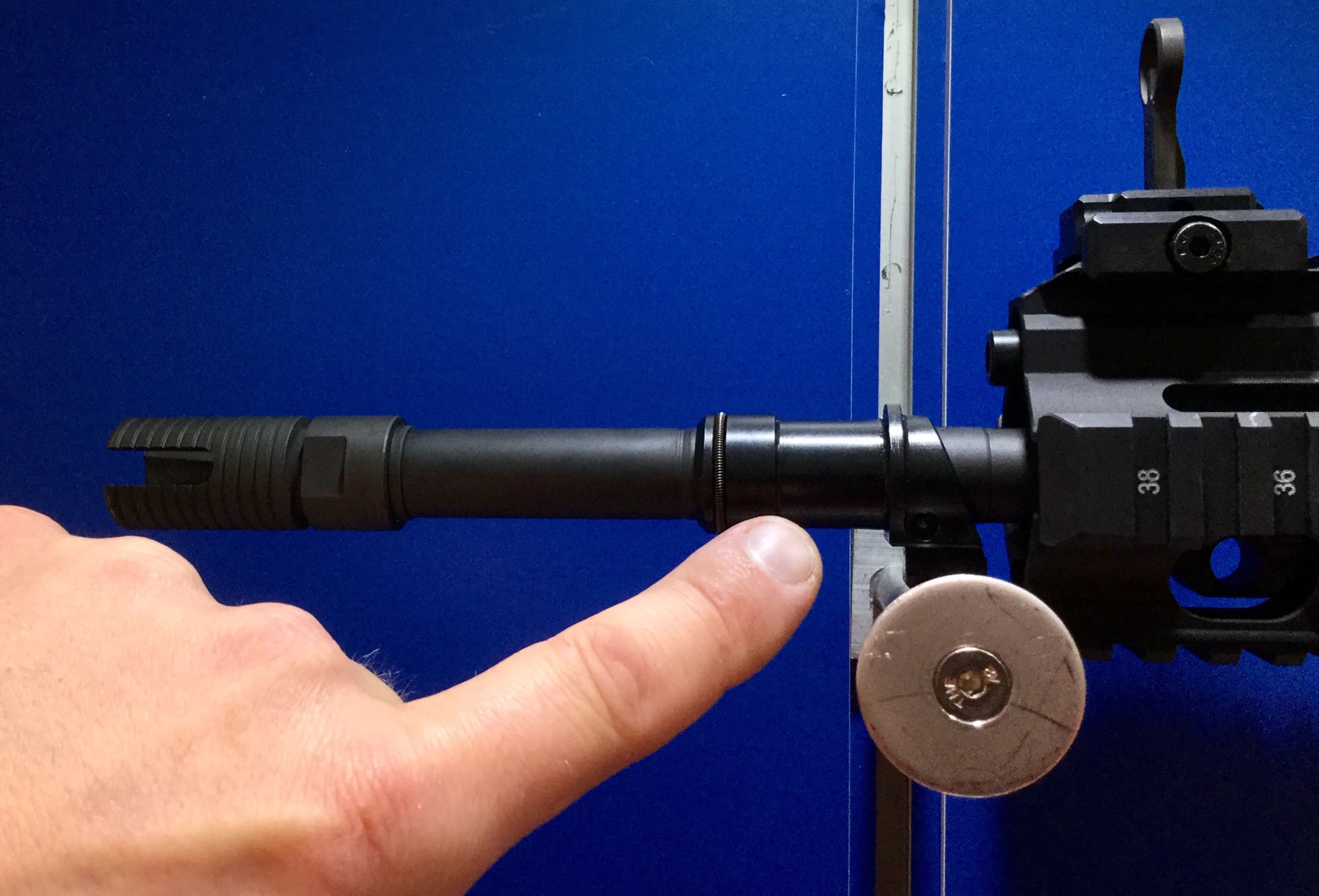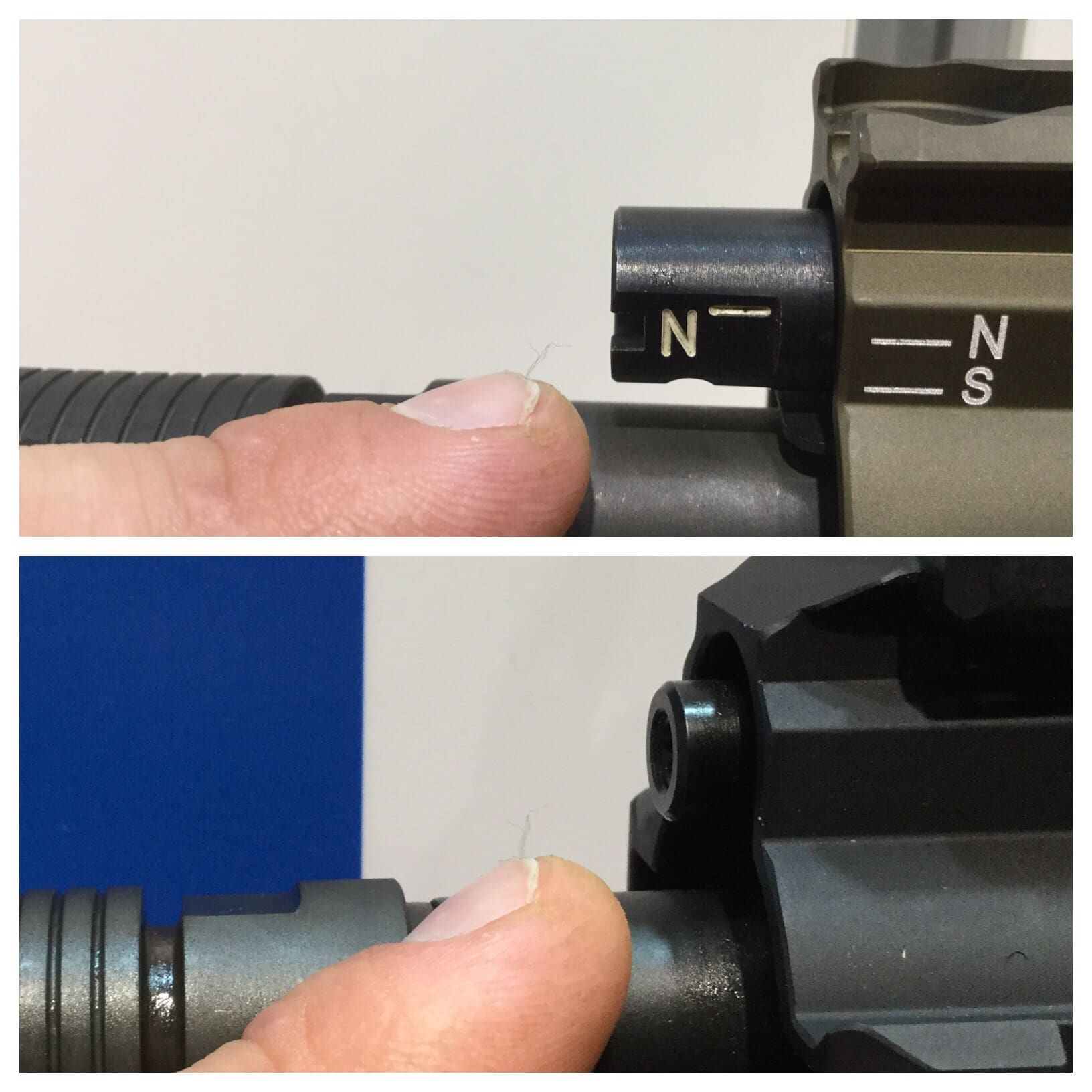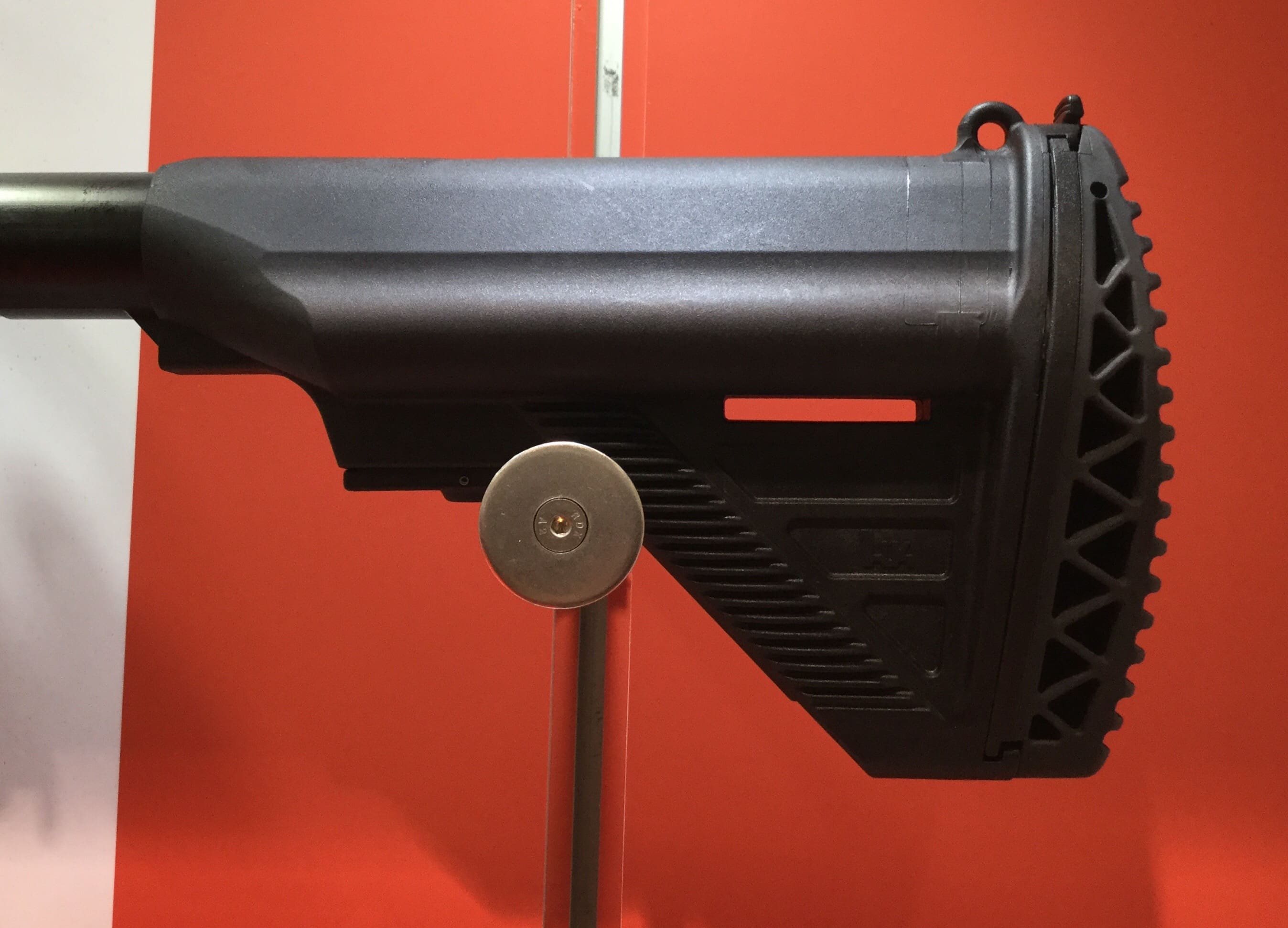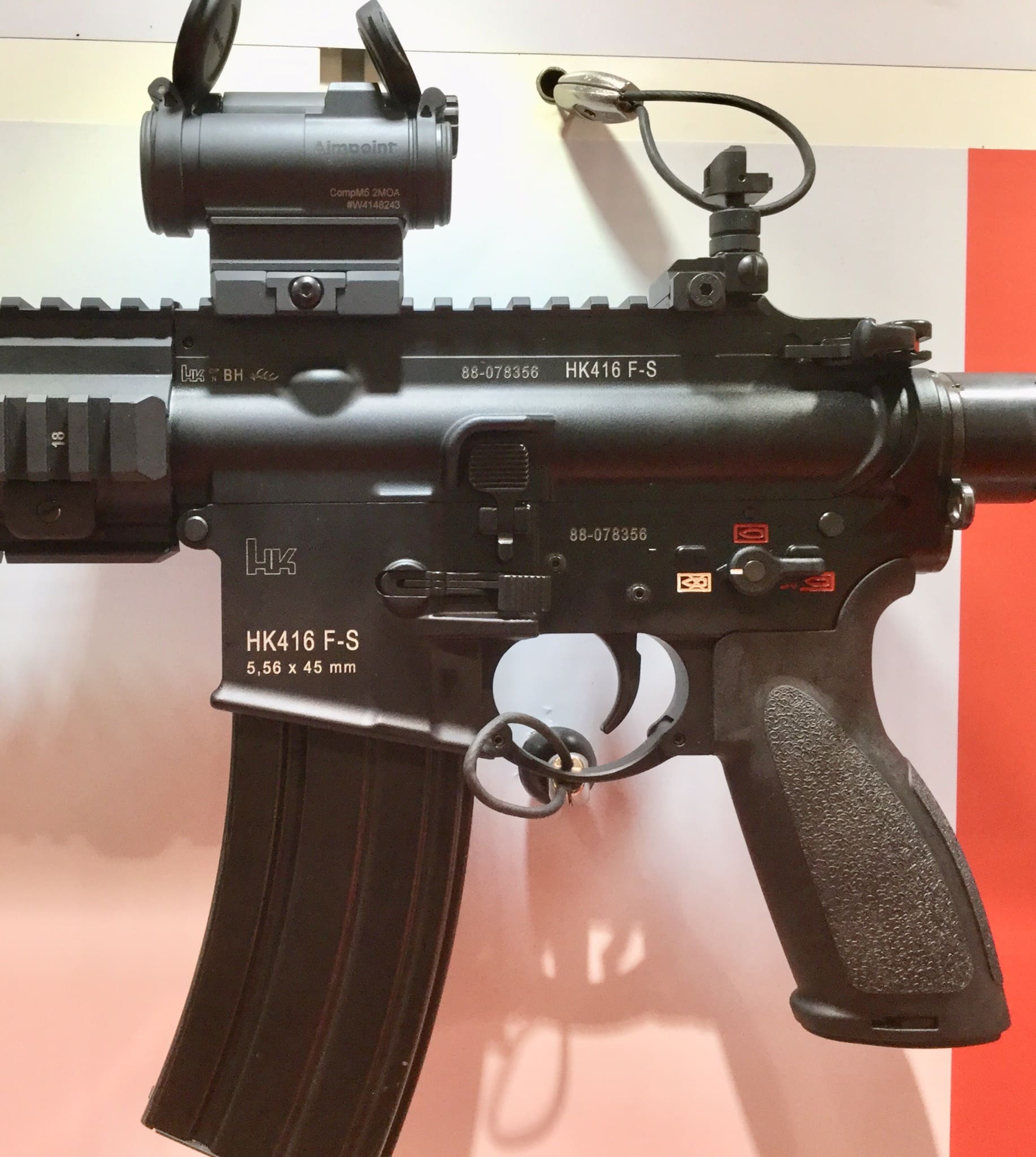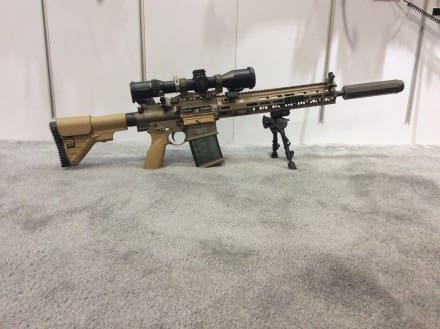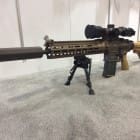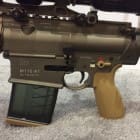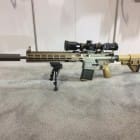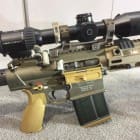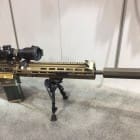WASHINGTON — The new Squad Designated Marksman Rifle, or SDM-R, is scheduled to be fielded at the brigade level starting in September, according to the Program Executive Office Soldier.

The new SDM-R is based on the Heckler and Koch G28E-110 Compact Semi-Automatic Sniper System, or CSASS, and will provide infantry, scout, and engineer squads the capability to engage with accurate rifle fire at longer ranges, said Capt. Weston Goodrich, assistant program manager for Soldier Weapons, PEO Soldier.
The SDM-R improves lethality by increasing the effective range a force can engage with an enemy. The new rifle was on display in the Pentagon courtyard May 24-25, along with 50 other technologies designed to increase infantry squad lethality.
“The Army’s current rifle technology is most effective below the 300-meter range; however, Soldiers are fully capable of fighting beyond that threshold,” Goodrich said. Comparatively, snipers are typically used at 600 meters and beyond.
“The new rifle addresses the 300 to 600 meters range gap outlined in the 2015 U.S. Army Small Arms Capabilities-Based Assessment,” Goodrich said.
“The Army is working to equip each squad with a predetermined amount of marksman rifles,” he added. The rifle is capable of firing either M80A1 Enhanced Performance Rounds or XM1158 Advanced Armor Piercing Rounds.
The new rifle will be equipped with a different buttstock and barrel twist than the CSASS model and carries a base weight of about 9.9 pounds. The rifle will also be outfitted with the SIG Tango 6 variable 1×6 power scope.
CSASS — COMPACT SEMI-AUTOMATIC SNIPER SYSTEM
In addition to the new squad rifle, the CSASS is slated to undergo production qualification testing and should be approved for limited user testing sometime in early 2019.
“The CSASS is smaller, lighter, and more ergonomic, as the majority of the changes were requested by the Soldiers themselves,” said Victor Yarosh, who works on the program at Soldier Weapons. “The rifle is easier to shoot and has less recoil, all while shooting the same round as the M110. [Additionally,] the CSASS has increased accuracy, which equates to higher hit percentages at longer ranges.”
As a replacement for the M110 — which is a longer, heavier, less ergonomic semi-automatic sniper rifle — the CSASS was developed to support snipers as they execute a broad spectrum of missions.
“An Army sniper is a kind of force enhancer because they execute a number of missions,” Yarosh said. “They provide a surveillance mission where they use their high-powered scope to observe activity downrange. A sniper can pin down an enemy force through sniper concealment and engagement to provide the right shots at the right time. They can also prevent an enemy force from moving out of cover, which allows our maneuver forces to exploit the enemy by moving into a better position and engage.”
The CSASS will feature a new suppressor and muzzle brake that allows for rapid successive follow-on shots with a reduced chance of detection. Furthermore, the new rifle will have higher power daytime optics, which will enhance a sniper’s surveillance capability and positive hostile identification at longer ranges.
7.62 LIGHTWEIGHT SMALL CALIBER AMMUNITION PROGRAM
The Army is also working on a replacement for conventional brass ammunition casings to help reduce the load on personnel and weapon platforms and improve mobility, according to Todd Townsend with PEO Ammunition.
“We’re currently working on drop-in replacement ammunition for the existing 7.62 family of weapons optimizing for the M240 family of machine guns,” Townsend said. “Ounces are pounds. So if we can take a pound out of a Soldier’s weight load, a Soldier could be more effective by carrying other important things.”
Currently, the program is evaluating three casing concepts and comparing them to the weight of brass ammunition. The first one is a stainless steel metal injection molded case. The second is a brass case with a polymer body. And the last is stainless steel with a polymer body, Townsend said.
PEO Ammunition is slated to launch into the testing phase sometime in the coming months. Portions of the test data from the new rounds will be sent back to the developers to help improve the product.
“We’re looking at doing a full-up qualification by fiscal year 2021. We are aiming for a fielding by FY22,” he said.
Program managers responsible for the new 7.62 ammunition program have partnered with the other services, including U.S. Special Operations Command, and forces in the United Kingdom.
“We’re looking at other calibers as well. One of them is 50-caliber round,” Townsend said. “We will continue to coordinate within all test areas to make sure that we don’t do redundant or unnecessary testing.
“The Joint Light Weight Integrated Product Team ensures that all the services are all working toward one common goal of lightening a load.”
By Devon L. Suits, US Army


